Imagine heading down a rural lane, with trees thick on either side, and then rounding a curve and finding an old covered bridge over a rushing river. Many covered bridges in the U.S. were built in the 19th century to protect the span from weather damage. Yet, the covers gained a far more romantic meaning as these crossings became known as “kissing bridges.”
Drivers were expected to slow their horses to a walk when passing through to reduce wear on the planks, thus offering a courting couple riding the horses a chance to steal a private moment. If this image of sweethearts in buggy appeals and creates a hankering for slower, bygone days, head out for a drive or a hike to visit these beautiful, historic covered bridges.
Newfield Covered Bridge
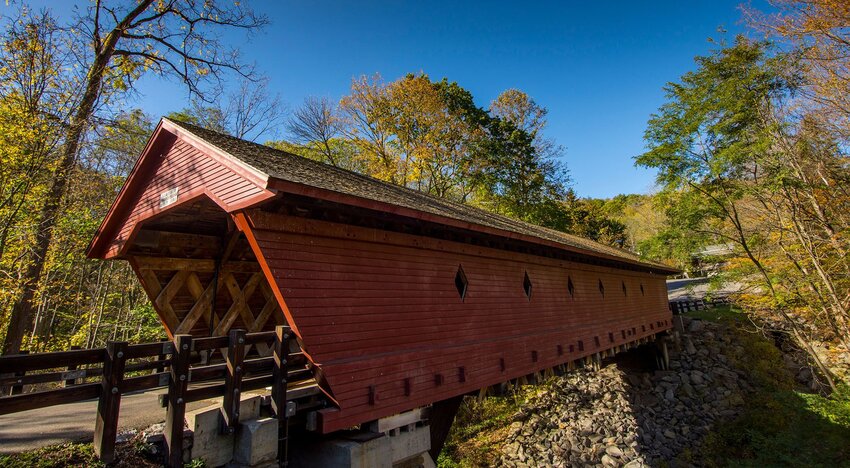
Newfield Covered Bridge in Newfield, New York, stretches over the West Branch of Cayuga Inlet in the Finger Lakes region. Built in 1853 and spanning 115 feet in length, this bridge cost only $800 to build. Like most covered bridges of this era, the trusses were fixed together using trunnels, or wooden pins. Originally, the siding ran in a solid wall all along the bridge, but to let in more light, diamond-shaped windows were cut in the wood. Painted an unusual dark red wine color (most red bridges are painted a bright barn red), and framed by low, split-rail fencing and lush greenery, this bridge and its surrounding area beckon visitors for a summertime walk in the forest or along the water.
The Flume Covered Bridge
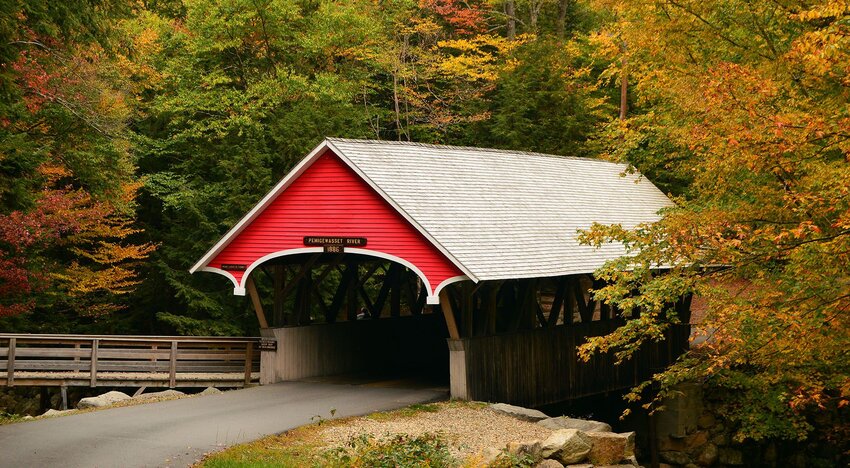
The Flume Covered Bridge in Franconia Notch State Park, New Hampshire, looks almost like a fairy-tale cottage with its bowed red façade and Paddleford trusses. Built-in 1871 to cross the Pemigewasset River, this 50-foot bridge, with a vertical clearance of only 11 feet, 8 inches, offers a hiker’s walkway attached on one side. Set on a curving lane amid the verdant forest, the bridge is still open to auto traffic. Plan a hike to Flume Gorge waterfall and see this historic treasure spanning the river.
The A.M. Foster Covered Bridge
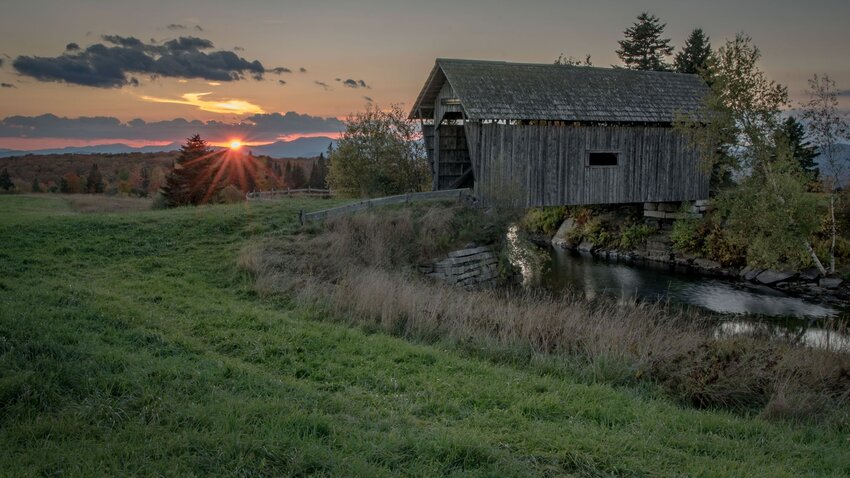
Situated along the famous Vermont cheese trail, the A.M. Foster Covered Bridge near Cabot, Vermont, looks like something out of an old Western film. Utterly charming, the weathered wood siding and shingled roof seem like they might have seen any number of 19th-century events. But don’t be fooled: This covered bridge is a 1998 replica of an old farm bridge that crossed the Winooski River. Regardless of its relative newness, this bridge offers any number of incredible photo opportunities and, with just a bit of imagination, you can almost see the riders and drovers spilling from the bridge’s mouth before wending their way throughout the Vermont countryside.
The Campbell’s Covered Bridge
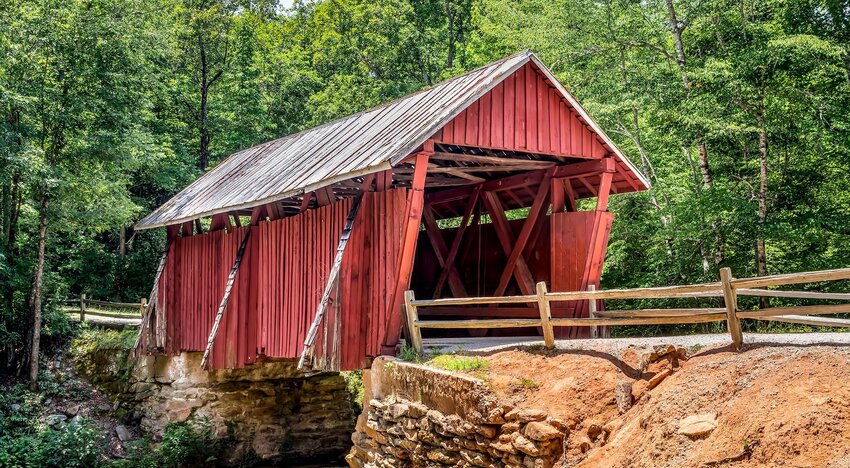
The last covered bridge in South Carolina, Campbell’s Covered Bridge, near Landrum, offers romantic surroundings including verdant forests. Painted a charming bright red with a white roof, this bridge is quite short and looks almost like a little barn. Interestingly, covered bridges were purposely built to look like barns so as not to spook nervous horses. This one appears to be leaning dangerously, yet as is true of many covered bridges, Campbell’s roofline projects forward where it meets each bank over the base of the bridge. Bring a picnic to the park area, and be sure to go wading in Beaverdam Creek.
The Stark Bridge
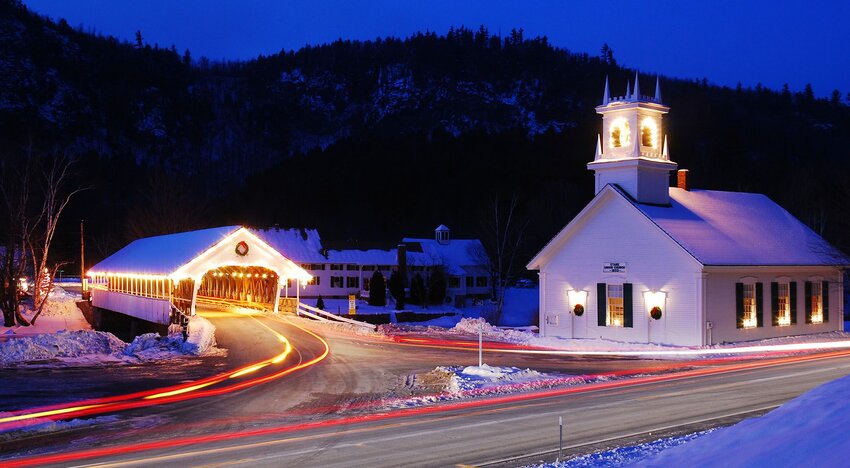
Built-in 1862 across the Ammonoosuc River in New Hampshire, the Stark Bridge looks a bit like a Victorian house with its artful façade and exposed beam-work. An entirely white exterior and roof set off this bridge beautifully against the surrounding greenery. Footwalks on either side are separated from the auto lane by natural wood-crossed trusses, lending a light, openwork feel. Next to the bridge is the charming Stark Union Church, built in 1853. Try to see this bridge in the fall when the leaves turn, or at night at Christmastime, when it’s lit against the snow and adorned with a huge wreath.
Sach’s Bridge
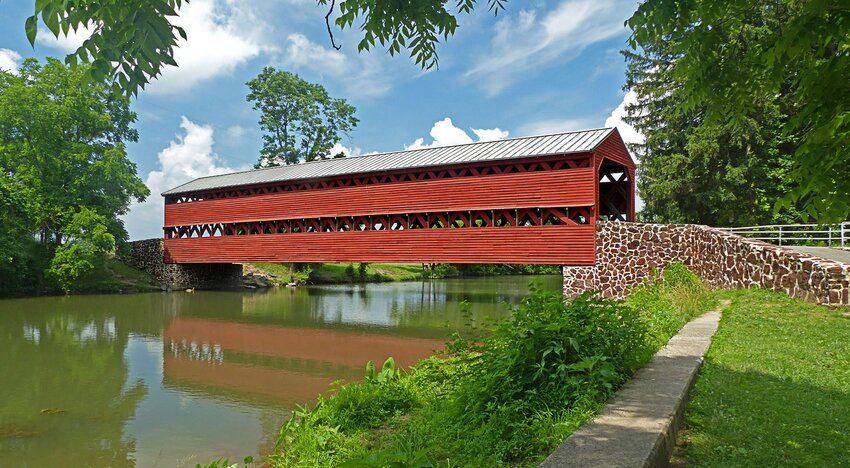
- For Civil War buffs, there is no more important covered bridge than Sach’s Bridge in Gettysburg, Pennsylvania, which was crossed during the Civil War by Union and Confederate soldiers alike. It was built in 1854, just a few years before the onset of the war, and is now open to foot traffic and fishing only. Lovely stone foundations at either end and an unusual style make this bridge appear almost double-decker, and the illusion is mirrored in the glassy water of Marsh Creek. Both the weathered red exterior and the picturesque area are weighted with history. And if you believe in the paranormal, Sachs Bridge is a must-see, as it is widely considered haunted. Be sure to walk through at night!
Humpback Covered Bridge
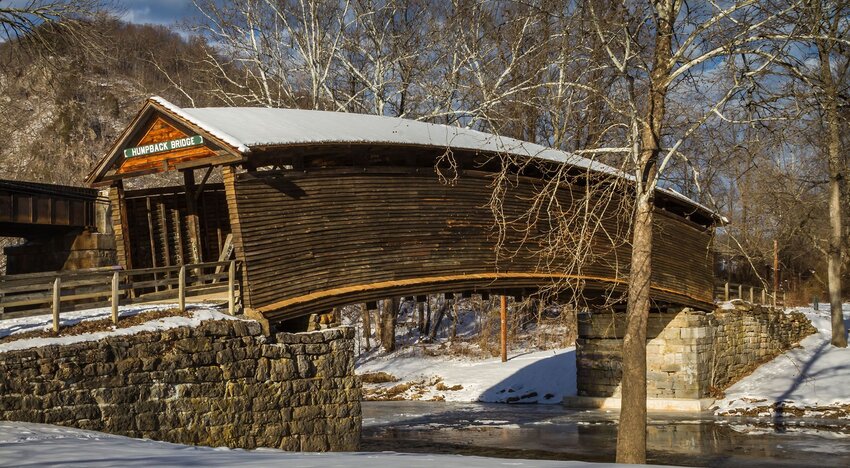
Humpback Covered Bridge in Covington, Virginia, has to be the most original covered bridge on this list, simply by virtue of its shape. True to its name, the bridge curves up over Dunlap Creek, rising four feet higher at the center than at its ends. Built in 1857 amid gorgeous Virginia greenery and boasting lovely stonework foundations at each end, this is the only bridge of its kind in the country. The fantastically curved arch bridge, for pedestrians only, looks like something out of a fairy tale and has been photographed for dozens of coffee-table books such as America’s Covered Bridges and Covered Bridges Across North America.
Sunday River Bridge
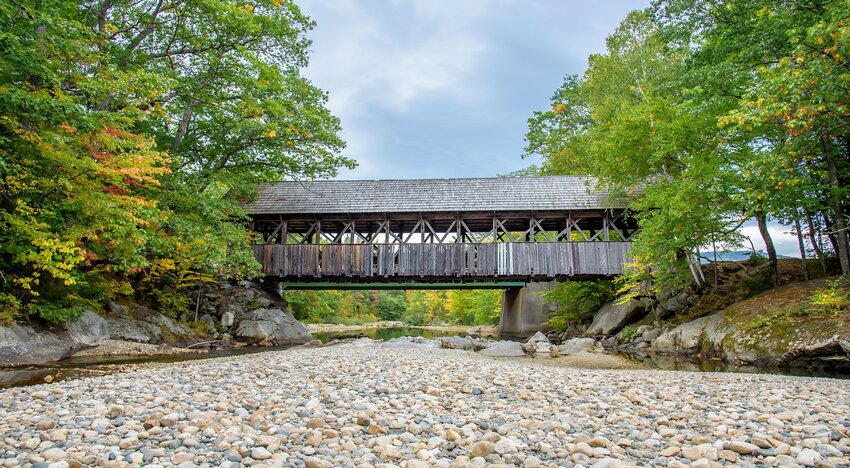
Artist’s Bridge, also known as the Sunday River Bridge, in Newry, Maine, features weathered wood on a charming façade, openwork crisscrossed trusses above half-sides, a lovely stony streambed, and arching trees. This venerable old bridge, built in 1872, is closed to traffic and can be procured for a wedding or other important event. Equally lovely in summer and winter, this bridge offers limitless photo opportunities. Wait for the autumn light of an afternoon and enjoy the rustling of light wind in the trees and the soft glimmer on the water.
Baltimore Covered Bridge
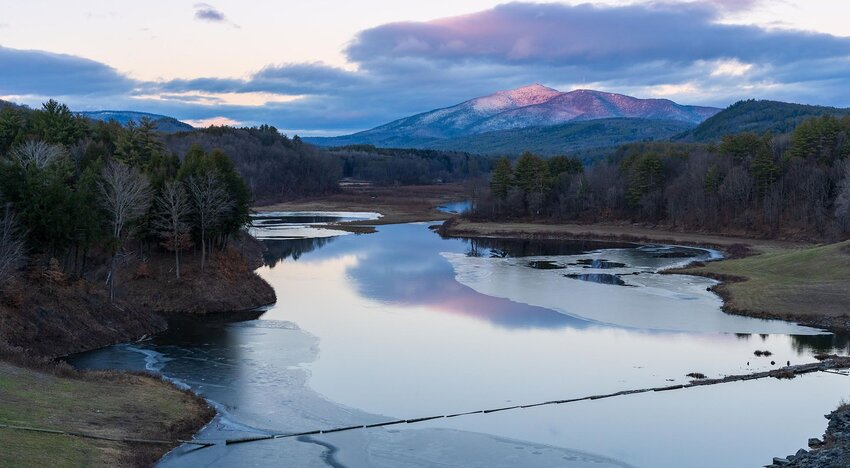
Extremely photo-worthy, the Baltimore Covered Bridge in North Springfield, Vermont, is only 37 feet long, but what a picture it presents with its weathered wood, shingle roof, and interior lattice trusses. Built in 1870 to cross Great Brook, it was moved in 1970 to its current location next to the Eureka Schoolhouse, which dates back to about 1790 and has also been moved and restored as a historic landmark. This little bridge is well worth a visit.
Fitch’s Covered Bridge
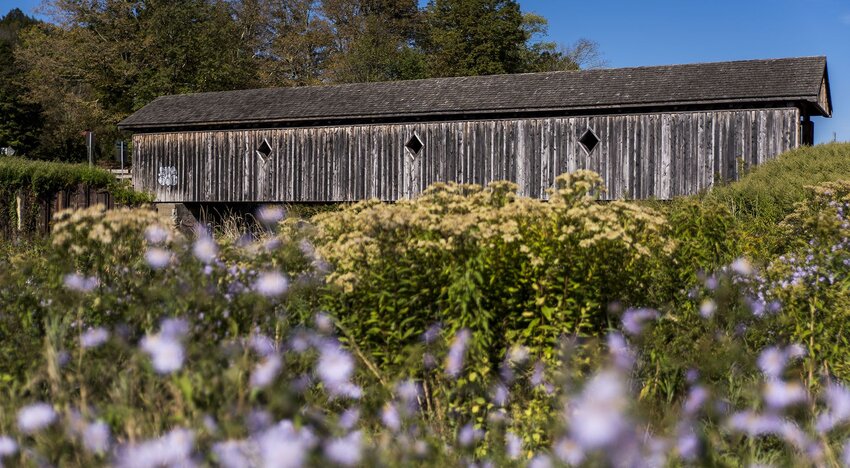
Crossing the West Branch of the Delaware River is Fitch’s Covered Bridge, just a few miles from Delhi, New York. Built in 1870, it was moved to its present site of Fitch’s Crossing in 1885 — you can still see the markings made on the top chord piece of each truss just before the move to ensure a perfect rebuild. Set against rolling green hills and blue sky, this weathered brown bridge recalls an earlier day, when horse-drawn carriages would appear out of the darkened interior.
Goodpasture Covered Bridge
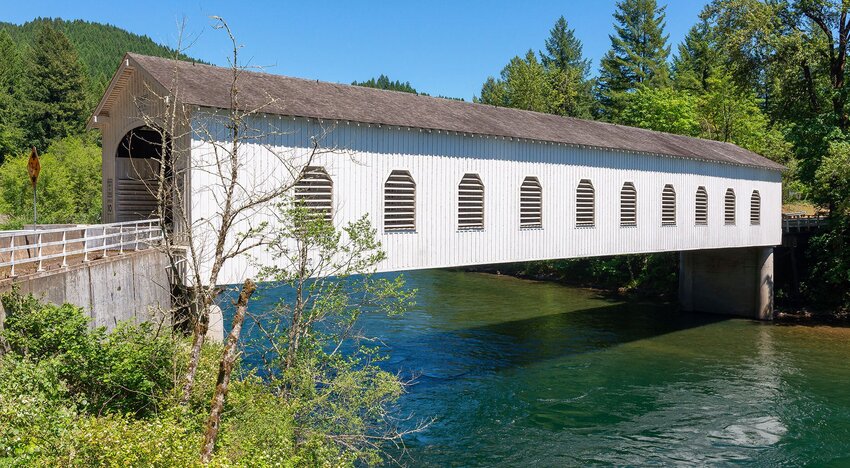
The Goodpasture Covered Bridge near Vida, Oregon, is unusual for its 20 louvered windows along the span, which allow enough light into the interior to keep it bright despite the solid white siding. Set amid gorgeous fall foliage and with the McKenzie River burbling beneath rocky cobbles, this bridge is a photographer’s dream. An exceptional 165-foot-long span, it was built in 1938 and restored in 1987 to accommodate continuing auto traffic. During the Holiday Farm wildfire of 2020, the bridge was assumed lost, but it miraculously escaped the flames.
The Horton Mill Covered Bridge
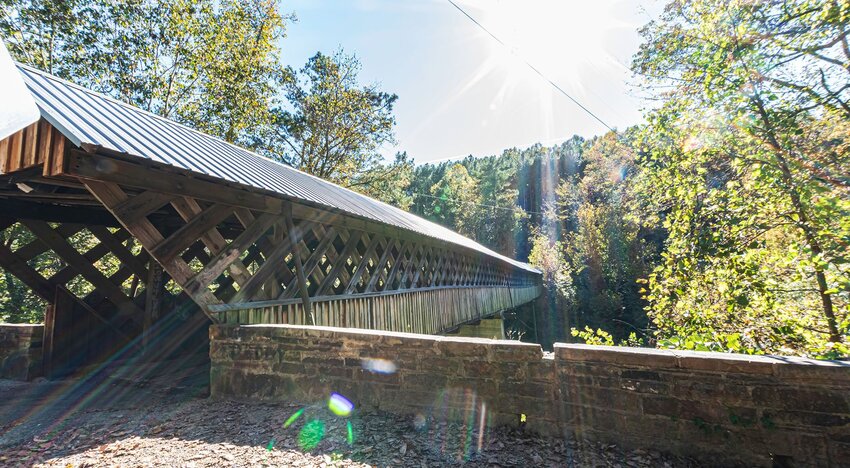
The Black Warrior River in Blount County, Alabama, is crossed by the Horton Mill Covered Bridge. Seventy feet over the water, it is the highest bridge over a waterway in the country. With beautiful weathered wood siding halfway up, and latticework above, the bridge can be enjoyed close up on a drive-through, and with only one lane and a speed limit of five miles per hour, there’s no rushing it. With its crisscross, open trusses, and low-gabled roof, it will remind visitors of a fanciful, old-fashioned finger trap — the kind that kids find at carnivals or an old five-and-dime. Oozing atmosphere against a backdrop of forest and set over granite slabs along the river, this bridge offers much for photographers and day trippers.
The Hyde Hall Covered Bridge
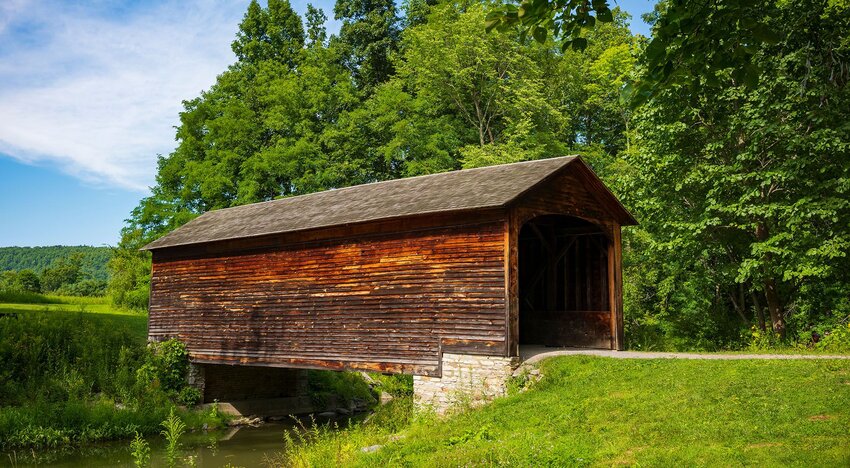
Built originally on the Hyde Hall private estate, the Hyde Hall Covered Bridge in Springfield, New York, is now part of the beautifully named Glimmerglass State Park. The oldest existing covered bridge in the U.S., it was built in 1825 using the Burr Arch design and is unusual for its horizontal siding. Found at the northernmost tip of Otsego Lake, the deep weathered brown bridge is brimming with nostalgia. A picnic along the grassy banks next to the water will refresh the soul.
The Portland Mills Covered Bridge
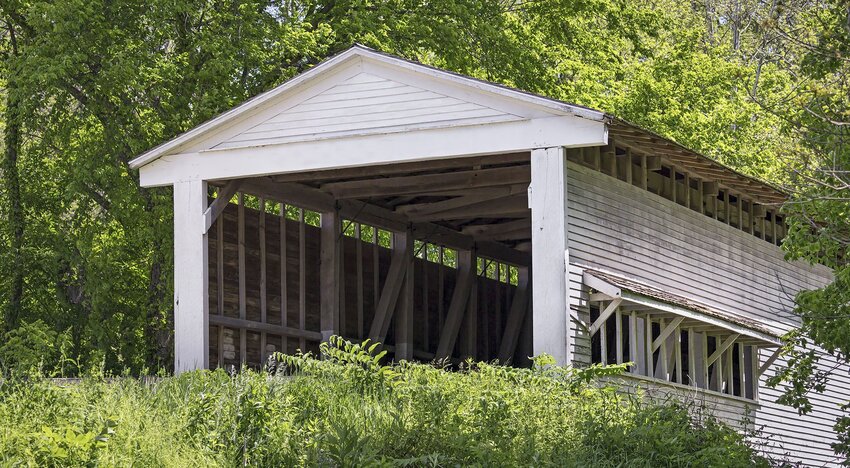
Found in Parke County, Indiana, the Portland Mills Covered Bridge was built in 1856 to afford a crossing of Big Racoon Creek. It was moved to Little Racoon Creek in 1961 and was further restored in 1996. Painted white from top to bottom and with several sets of windows along its sides, it resembles a vintage white barn. The shimmering creek and lush greenery beg for a streamside picnic complete with romantic photos.
The Watson Mills Covered Bridge
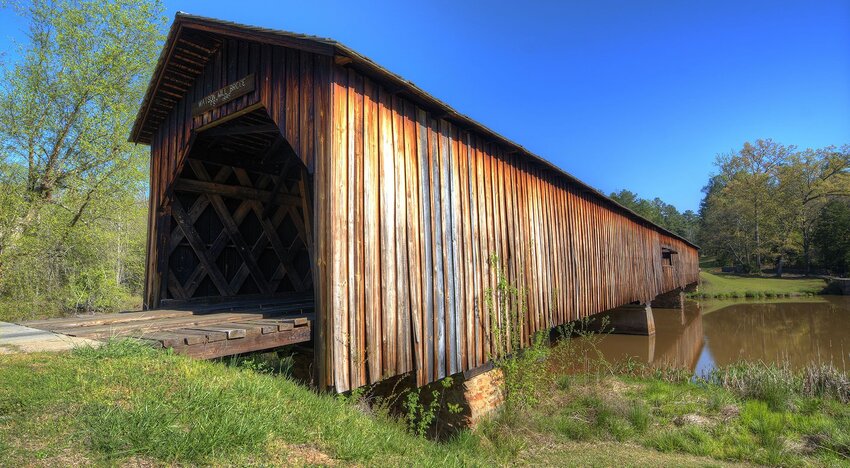
In Comer, Georgia, the Watson Mill Covered Bridge, within a state park of the same name, crosses the South Fork River. Built in 1885, the bridge employs a lattice truss system visible only from the inside, as the outside is covered in weathered wood siding that calls up images of an earlier century. Viewed from downstream, the bridge appears to sit directly atop a waterfall, as the river flows under the bridge and over a relatively short but sheer, rocky drop. A vantage point nearer the bridge itself, however, reveals a perfect mirror image in the glassy pool just beneath its span.

 Facebook
Facebook
 X
X
 Pinterest
Pinterest
 Copy Link
Copy Link



